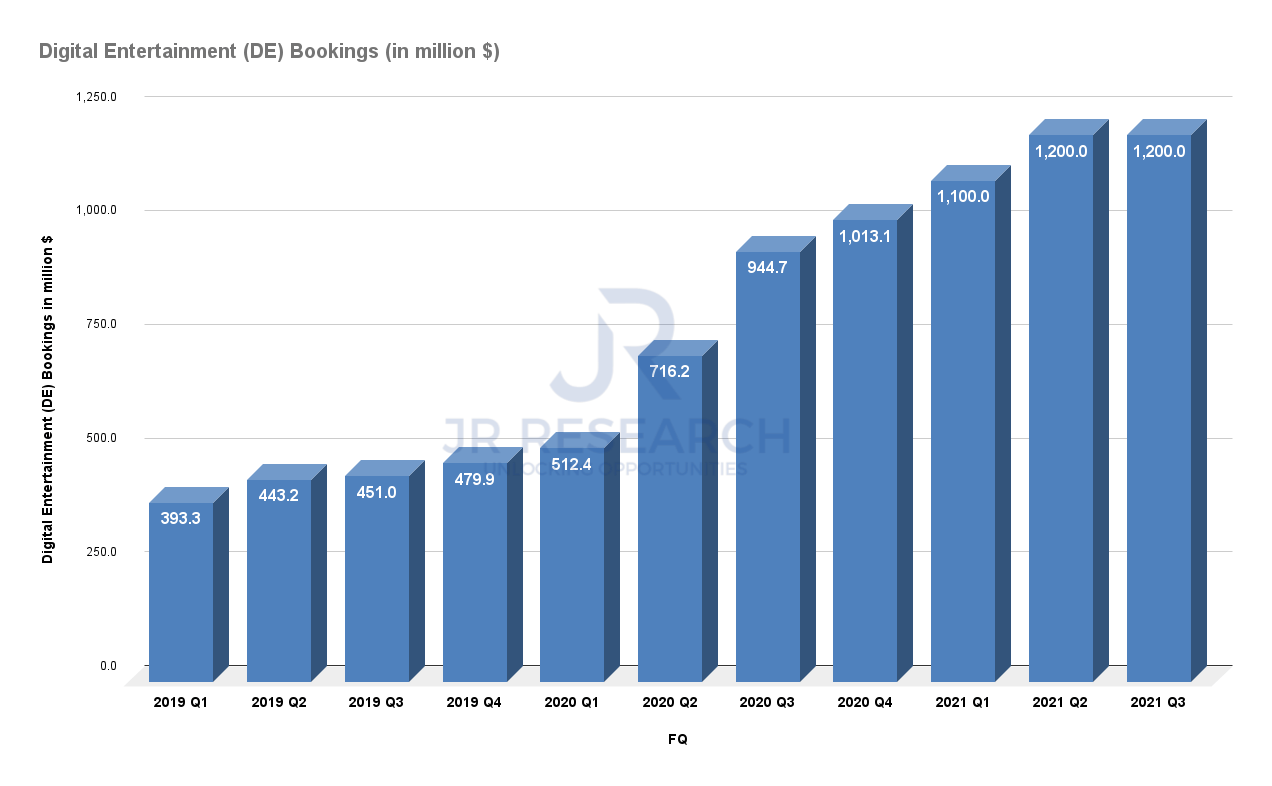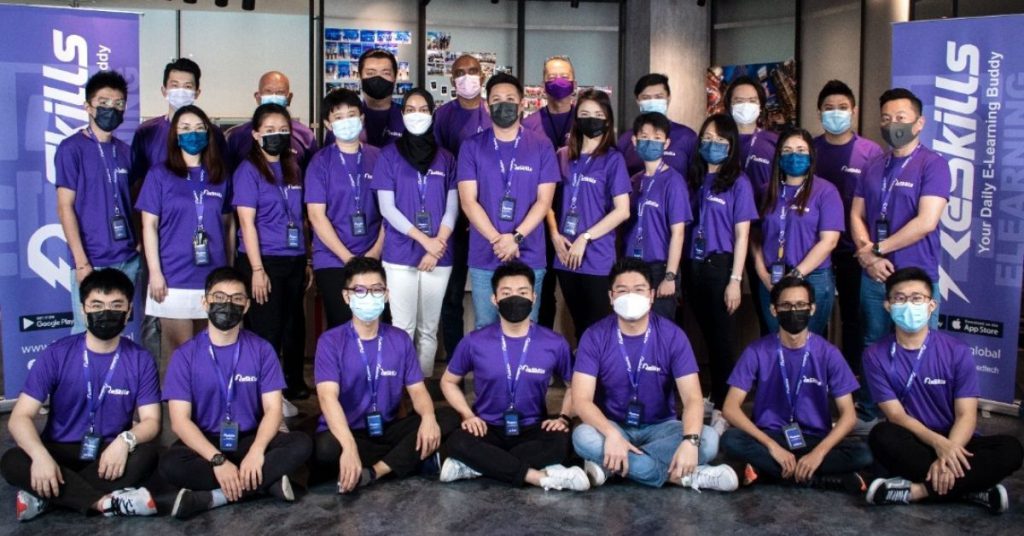Put your free time to work: Here are 8 lucrative side hustles for you to explore in 2022

In this day and age, having just one income is no longer as safe. To be financially independent faster, a side hustle is a way to go to reach there.
A side hustle generally refers to a way to make money outside of your nine to five job. They are usually freelance, part-time, or hobby-related jobs.
Side hustles allow you to have more than one stream of revenue. With multiple streams of income, it empowers one to have either more savings or have the freedom to buy the things he or she needs and wants with less financial worries.

As we close the chapter for 2021 soon, we take a look at a couple of side hustle ideas that you can consider as you start planning your new year’s resolutions.
For those who don’t plan resolutions, you can always take the time to see the various opportunities to earn a side income in our list below. For all you know, it might just be something of your interest and you might want to know more about growing that into a money tree.
Home-based baker, online food store
Know how to cook a mean meal of laksa? How about some high-level baking skills that make your friends always show up unannounced?
Home-based food businesses have been on the rise due to the pandemic. People who used to bake or cook only for their families are trying out selling food via their own Instagram, or Carousell. Why? Because it’s just so easy to do it.

Many people have also turned to cooking during this period to destress (guilty as charged) and in that experience, they realise that they enjoy working in the kitchen.
You can start small, by making food and products for friends and family first. Then start charging for the food that you make. Many home-based food businesses started from their neighbours, friends, and family too.
You will earn your keep according to the demand of your food, so take nice pictures and get customers to post their reviews early on as a head start.
Food delivery rider
The food delivery scene is not going away and is growing at a rapid pace. The fact is shown by the latest e-Conomy report from Google, Temasek, and Bain & Company, which showed that the food delivery sector in Southeast Asia grew 33 per cent in Gross Merchandise Value from a year ago.
In Singapore, it’s easy to sign up online to be a food delivery person. You can start making money on the road by signing up on the food delivery companies’ websites online and downloading their mobile phone apps.

What’s great is that it is fuss-free as you get to collect and wear uniforms from the food delivery companies and use their food storage bags to transport food. The resources are provided for you, you just need to do the work.
You’ll get to take home around S$10 to S$20 per hour, according to Glassdoor stats. The food delivery companies no longer publish their rider pay structures to remain competitive.
Some delivery people choose to ride bicycles and personal mobility bikes in low-density areas like Seng Kang and Punggol. But do read up on the road safety rules before you embark on this side hustle, as there are strict rules enforced by the Singapore Traffic Police.
Ride-hailing driver
Heading home after work? Why not turn on Grab, TADA, or the Gojek driver app to see if you can pick up a passenger and earn some income at the same time?
This is environmentally friendly and reduces your carbon footprint too, as you are sharing each car ride with more people.

You will need a car for this to work as a side hustle. All you need to do is to just get into your car, turn on the app, and you can start work, how simple is that. When you are free on the weekends you can even do a couple of hours of rounds and make a quick buck.
Based on Grab’s income calculator, you can earn around S$617 a week as a part-time Grab driver if you work three hours every day. If you drive casually, then the income will be less of course.
That’s not too bad for a few hours of work. The only expense will be the mileage on your car and the petrol costs.
Yoga instructor
Yoga is a gift to many people who try it out. It helps to soothe and relax the mind as well as keep the body toned at the same time.
For me, I am at most an intermediate level Yogi, but I too have many times considered taking on a yoga teacher training course to become a teacher and earn money as a side income. (This could be my 2022 new year’s resolution).

The standard route to becoming a yoga teacher is to complete a training course that usually requires a commitment of 100 hours (or more) or a couple of weekends.
There are various types of courses, some specialise in the spiritual side of yoga, while others focus on vinyasa, which is a flow technique that is more rigorous.
Many yoga studios such as Yoga Movement and Yoga Mala teach the course to be honest, you just need to have the money to pay for them. A course can cost a few thousand dollars to sign up for training and get a certification, so do the proper research to know what type of training you will be getting and what type of classes you can teach after.

Teachers can earn around S$45 per hour and up to S$65 per hour.
That’s really worthwhile if you are an enthusiastic Yogi and love going for classes. Why not just become a teacher and you can follow your passion, make new friends, and earn some moolah.
Spin or barre instructor
Are you a fitness junkie that goes to classes three times a week? Why not turn that hobby into a side income – you get to do what you like and earn money at the same time.
These classes not only allow you to keep fit and slim but also give you the adrenaline boost after every class.

Spin combines fast-paced cycling and strategic lighter rest intervals while you pedal on a stationary bike. Barre combines ballet, pilates, strength training, and yoga to create a dynamic full-body workout.
Spin or barre instructors seem to earn around what yoga teachers earn per hour.
There are a few ways to become a spin instructor – via online courses or take up a five-week physical course with gyms like Absolute Cycle.

As for barre, many studios offer instructor courses. WeBarre offers an instructor training course with certification. Barre enthusiasts can go for the course to deepen their own understanding of barre techniques and join the team after completing the course.
Some courses require time commitment, so be prepared to use up your off days for this endeavour.
Livestream influencer
Livestreaming has become the craze over the past year. People are signing up for TikTok and BIGO LIVE, as well as tuning in to fish market sellers talking on their Facebook Live.
You could be selling your own products, or just appearing pretty and talking to your followers, and money comes streaming in, literally. According to Millennial Money, small time streamers can earn from US$50 to US$1,500 per month.

Got some talent and want a platform to show it but you are just not ready for the big stage yet? Become a livestream influencer.
Influencers can sign on Singapore’s livestreaming app BIGO and start growing your followers. The gifting application on the app allows followers to “send virtual gifts” to influencers.
Followers can send virtual “diamonds” to you, which are worth US$0.3474 per diamond. To earn about US$1,000, you will need to receive about 3,000 diamonds.
Handicrafts seller
With more staying home and having nothing to consume but the internet, it has led to a burst of home-based craft sellers on social media who have as little as a few hundred followers to thousands.
You can sell your handmade designs on your own Instagram, or in stores like Shopee or Etsy. You can also list your products on Facebook groups or pages with zero investment.

This can include selling carved rubber stamps, pouches, and even artworks. For those who are more hands-on, you can also make earrings to sell.
The pricing is up to you, as some sellers even sell stickers from S$1.00 each.

The latest craze to hit the local crafts market are the “Ugly Portraits” sold on Shopee. Hand drawn by a Singapore “artist”, the person sells the drawings at S$4.00 to S$10,00 a piece. The Shopee listing showed that the seller has sold 338 pieces, which translates to almost S$3,000. That’s not too bad for some ugly pieces of drawings.
Carousell seller
Believe me, there’s always something in the house that you don’t want. I believe that can be the pants that you can no longer fit in, or an ornament someone that’s not close to you gifted you and is taking up too much space.
With the year-end period in full swing, you can take this time to slow down and declutter your home for the new year.

I used to sell items on Yahoo auctions and physical flea markets, but that would show that I’m a “boomer” and not hip. These days the trendy second-hand to-go place is Carousell.
You just need to download the app, register, and you can start selling things on Carousell. It’s easy to navigate and there truly are buyers who are bargain hunting for things that you may think are scrap.
One man’s trash is another man’s treasure. This is indeed true on Carousell.
Try second-hand tables, ovens, and even figurines. For those who see Carousell as a more serious venture, you can also sell items with larger price tags, like branded watches, lego collectibles, even XM studio toys (gasp).
Side hustles a “new normal”
We all know that having a side hustle in this period could be partly due to you being bored and stuck at home.
Although some employment contracts do restrict workers from taking on a second job, analysts say that such limitations are “unreasonable” unless the side job causes a conflict of interest with the main job.
There’s a need for a mindset adjustment from more traditional employers on workers “moonlighting”.

“The mindset has to shift, and also to really let employers know this is actually an employee engagement,” said Adrian Tan, a future of work strategist with the Institute for Human Resource Professionals.
The expert urged employers to think of allowing staff to pursue their interests as an employee benefit, similar to implementing flexible work arrangements.
Shifting towards a performance-based approach rather than an input-based (clock in how many hours a day) can help to retain capable employees and appeal to millennials and Gen Zs.
Indeed, when workers return to the desks happy and fulfilled, they get more productive too.
Get $20 off your order on VP Label when you checkout with Pace and the code PACEVP20 (min spend $80). Discover and shop exciting homegrown brands now:
[iframe_vp_product src="https://vulcanpost.com/label/embed-all/" id="iframe1"]
Featured Image Credit: WeBarre, Whiskdom, BIGO LIVE, CruCycle
Also Read: They took only S$600 monthly salary at the start, now S’pore’s XM Studios is making millions
Dyson to officially open its St James Power Station HQ in 2022, actively hiring in S’pore now

In November last year, British electronics company Dyson announced that it will be shifting its Singapore headquarters (HQ) to St James Power Station in 2021.
Previously, Dyson said that its move to shift its corporate head office to Singapore “reflects the increasing importance of Asia” to the business.
St James Power Station is Singapore’s first coal-fired power station. It was later used as a warehouse, and was most recently a nightlife hub.
Dyson has worked together with developer Mapletree to restore the building, and the first phase of the restoration is now complete.
As such, Dyson announced today (November 19) that it has begun moving into its new HQ, which will officially open next year.
“We are honoured to bring this iconic building back to life as our global headquarters. Dyson’s scientists and engineers will add to its already significant history through the discoveries they make and the technologies they develop,” said Dyson chief executive Roland Krueger.
Dyson is actively hiring in S’pore

Spanning 110,000 sq ft, the HQ will house three levels of research and technology laboratories and offices, as well as a heritage gallery within one of the historic chimneys to celebrate the history of the building and the area.
It aims to double its talent pool of engineers and scientists, with a focus on power electronics, energy storage, sensors, vision systems, embedded software, robotics, artificial intelligence, machine learning, and connected devices.
Earlier in April, Dyson said that it will be hiring at least 250 more engineers and scientists in Singapore over the next five years as part of its S$5.1 billion global investment in future technology.
At that time, there were about 700 engineers and scientists working for Dyson’s Singapore team of 1,400.
A recent check on its careers page revealed that Dyson is currently hiring for 154 roles in Singapore, from internship positions to more executive ones.
Get $20 off your order on VP Label when you checkout with Pace and the code PACEVP20 (min spend $80). Discover and shop exciting homegrown brands now:
[iframe_vp_product src="https://vulcanpost.com/label/embed-all/" id="iframe1"]
Featured Image Credit: Dyson
Also Read: Office, store, cafe under one roof: Here’s a look at Razer’s new S$100M SEA HQ at one-north
Getting laid off didn’t stop these M’sian chefs from opening an omakase spot with RM10K

It’s no news that Malaysia’s tourism sector was hit hard last year, and is only now beginning to recover. Zhexi and Yongzhi were two such employees who also felt its impact, losing their jobs as hotel chefs during the pandemic.
But this setback didn’t keep them down for long. With RM10K, they set up a small omakase experience in a 300 sq. ft space on February 20, 2021. They called it Eat and Cook.
At the time, it could only cater to 12 customers in a day, 6 for lunch, and 6 for dinner.

As neither Zhexi nor Yongzhi knew how to do marketing for their brand, they sought advice from their best friends Steve and Harry, who today serve as their current director and partner, respectively.
Together, the 4 of them were able to drive up awareness and traffic to the store, and seeing the traction they had gained so far, they decided it was time to expand.

Now located in Bukit Jalil City, they’re able to serve up to 30 pax a night.
An omakase of Malaysian memories
“The name of our restaurant sums up what we’re about. You enter with an appetite to eat and our chefs will decide what to cook for you—right in front of you,” Steve and Zhexi repeated their philosophy to Vulcan Post in an interview.
While Malaysia doesn’t lack omakase options, there’s a slight difference in Eat and Cook’s omakase branding.
When you think “omakase”, you’d usually think about Japanese cuisine, and rightfully so, as that is where the concept originated from.
However, for Zhexi, Yongzhi, and Steve, all of whom graduated from the same culinary arts school, what they wanted to take from omakase was mainly the mystery of the menu.
Then they focused on using locally-sourced ingredients for their dishes.

“We found that our homeland ingredients are neglected by our people and actually we do have very great produce like our herbs, seafood, and also spices from our local farmers which are from Cameron Highlands, Pantai Remis, Sabah, etc.,” Steve and Zhexi said.
“When we serve customers, we also will share [with them] how we cook, what local ingredients we are using to create the dish, and also what is the flavour [of it] that we grow up [with] as a Malaysian.”
The duo gave an example of a familiar dish they had transformed. Assam laksa is usually served with thick noodles and a rich mackerel broth, but at Eat and Cook, the noodles are replaced by tuna strips and the broth is changed to a light foam.
“People may not know [what it is when] looking at it, but when they taste it they will immediately [recognise] the flavour of the dish,” Steve and Zhexi said.

In a sense, you could say that their omakase theme is built on reigniting memories Malaysians have with their favourite food through reimagined and transformed dishes.
Pivoting in the midst of a lockdown
Just over a month after opening, Eat and Cook actually had to close its doors when the government announced the COVID-19 lockdown.
“It really hurt badly because every month we do not have enough sales to cover the expenses of the restaurant, because we didn’t [lay off] any of our employees,” the duo shared.
“But thank god, once we opened the restaurant, most of our customers supported us so we are able to get back on track.”
Though they weren’t able to serve customers omakase during the lockdown, the Eat and Cook team didn’t mope around.
They got to work changing their food from fine dining to a variety of other styles such as barbeque, a Don (rice bowl dish) menu, and a Home Chef Series meal kit for fans to cook up their own 3-course set for 2 pax at home.

Since reopening, Eat and Cook has returned fully to omakase fine dining. According to the team, business is booming—they’re always fully booked, and most guests have to book a slot 1.5 months in advance.
Eat and Cook changes its menu every 3-4 months based on the season, and for the current one, it’s serving an 11-course menu that costs RM398++.
On their website, you can usually find a menu that outlines the ingredients you’ll be enjoying, but you’ll have no idea what creative forms these dishes will take in the spirit of omakase.

Teamwork makes the dream work
Amidst strong fan support, Eat and Cook hasn’t forgotten the people who matter most: its own team. It prides itself on fostering a good team culture, and even highlights team members on its social media to give fans a personal understanding of the people behind their food.
“We would like to expand our F&B group so all of the staff have the opportunity to lead, to experience, explore their creativity, and also become one of the shareholders,” Steve and Zhexi expressed.
“We do believe a good commission system is also very important in an organisation because it motivates the employees and makes them more productive, and they will feel the company is part of them as well.”

With the right team, they’re aiming to become one of the best restaurants in KL and to get recognised by Asia’s 50 Best Restaurants to increase brand visibility.
Already thinking ahead, Steve and Zhexi believe that this would enable them to recruit elite talents as well as start new brands.
Each brand would carry different concepts, but the team will continue to target medium to high-range customers.
Also Read: COVID-19 has driven the need for secure online signatures, which is this M’sian team’s forte
Featured Image Credit: Eat and Cook
Shopee is now equal to Alibaba’s entire international e-commerce, and about to outgrow it

Quite unusually, both Alibaba and Sea Ltd. published their latest quarterly results this week, after the Chinese giant cut projections and delayed the publication by two weeks earlier in November.
And they do make for a relatively grim reading, after it missed targets for two straight quarters and slashed its forecasts for the entire FY2022.
While much of the company’s problems are down to a slowdown in China and the political crackdown on the country’s digital megacorporations by Beijing, the company has fared equally poorly abroad.
Alibaba hits the ceiling
Its sales on the mainland are still strong, but appear to have hit a limit.
The company posted a YoY increase of 33 per cent for Chinese retail but at 126.8 billion RMB, it is 6.7 per cent down from the quarter ending in June, when its revenues peaked at 135.8 billion RMB.
It’s a similar story abroad, with revenue down to US$1.61 billion from US$1.67 billion in the previous three months — a decline of around 3.6 per cent.
In fact, Alibaba has been at the same level of around US$1.5 to US$1.6 billion per quarter since the beginning of 2021, which indicates it has reached limits to its growth outside China at a time when competitors are making rapid progress.
Meanwhile, Shopee’s parent company, Sea Ltd. has just posted US$1.5 billion in revenue for Q3 2021, up by 134.4 per cent year-on-year and 25 per cent quarter-to-quarter (from around US$1.2 billion in Q2).

Given the trajectory into Q4 2021 and the fact that it has been adding US$300 million to US$400 million per quarter this year, it seems certain that Shopee has either closed that tiny remaining gap or already surged past Alibaba.
Unlike its Chinese competitor, Sea Ltd. upped its projections for the entire year for the second time.
Last quarter, it expected up to US$4.9 billion in e-commerce revenue and this quarter’s guidance puts it at between US$5 billion and US$5.2 billion for full 2021 — though given its current pace, it may very well beat expectations again and even US$5.5 billion is not beyond the realms of possibility.
This is particularly likely given its recent entries into new markets in Europe and India, which — even if small — will add to the company’s revenues during the typically busy end of the year.
Future is not without bumps for Sea
While these results may suggest that the company is doing exceedingly well, we can’t forget that its business model relies on the profits generated by the digital entertainment arm of Garena, which offsets some of the costs incurred by growing Shopee and Sea’s other services.
As you can see below, after witnessing a boost in bookings during the pandemic, Garena’s growth appears to be normalising, what may have knock-on effects on Shopee’s growth as well.

Should the digital entertainment business suffer a drop in profit margins (heaven forbid), then overall performance of Sea can be hurt quite badly — and rapidly — as the company keeps losing money in pursuit of the market share elsewhere, particularly in e-commerce.
It still has pretty deep pockets at the moment, given its market capitalisation, which has skyrocketed in the past two years and currently sits at US$170 billion (with guidance of well over US$200 billion by the likes of Bank of America, Citigroup or UBS).
Thanks to it, it was able to raise nearly US$9 billion in the past year alone and currently boasts around US$11 billion of cash in hand.
That said, progressing normalisation of life with Covid-19 around the world is likely to cool growth of digital services, which have received an enormous boost with billions of people stuck in their homes during the pandemic.
The immediate future still looks bright, with expected e-commerce revenue boost of further 51 per cent in 2022, what would bring it to over US$7.5 billion.
That said, gaining a stronger and more profitable foothold in more developed markets (e.g. in Europe) is likely going to cost the company dearly in the coming years, while it is still competing for market share in Asia and Latin America.
To handle all of them successfully, it needs to start turning a profit among its most mature customers and offload the burdens borne by Garena in the past two years.
Undoubtedly, Sea has used the opportunity Covid-19 has presented to its absolute maximum, reinvesting everything it could to ride the wave. It’s now about reinforcing these gains and the next two are likely to show us just how stable and lasting Shopee’s presence around the world is going to be.
Get $20 off your order on VP Label when you checkout with Pace and the code PACEVP20 (min spend $80). Discover and shop exciting homegrown brands now:
[iframe_vp_product src="https://vulcanpost.com/label/embed-all/" id="iframe1"]
Featured Image Credit: Reuters
Also Read: Forget Alibaba, Shopee is about to meet its toughest competitor yet… in Poland
M’sian edutech startup bags US$1.5M funds 1 year after launch, to expand further in SEA

[Written in partnership with Supernewsroom, but the editorial team had full control over the content.]
Within one year of operations, online live training platform ReSkills has secured a US$1.5 million (about RM6.2 million) investment.
Funded by a group of private angel investors, it was led by JSF Platinum to help boost ReSkills’ growth plans and stabilise its expansion in the SEA region. Currently, ReSkills is present in Indonesia, Thailand, and Vietnam, with plans to capture the Indian market in December.
“These are the developing countries in the region with a huge youth population size. They are hungry for learning growth to improve their skill sets,” ReSkills’ CEO Jin Tan (Jin) told Vulcan Post.
With the funds, Jin plans to enhance and further develop the edutech platform. The team will also focus on its marketing efforts to acquire more users and recruit more coaches.
A recap on the lesson

The last time we wrote about ReSkills, I was initially sceptical about the training platform; the courses offered were reminiscent of what I’ve seen offered by marketing gurus.
Jin was quick to mitigate my suspicions. He assured that ReSkills’ 100 coaches from around SEA are all handpicked and each has a minimum of 10 combined years of practice and experience training in their industries. As of now, they boast 169 coaches in total.
Furthermore, the platform was started as a way to help corporate trainers shift their content online. This decision was further vaidated by the realisation that youths were keen on upskilling, but didn’t know where to start.
Thus, ReSkills was founded as a live learning and training platform where seminars are conducted in real-time so students can interact with coaches as and when they have questions. Called OnLIVE, courses are available every day, and users are notified about upcoming classes two weeks in advance so that they can plan ahead.
“We want our learners to have significant and actionable takeaways from each session so they can use it to improve their lives immediately besides gaining the necessary micro-credentials from ReSkills,” he said.
The platform uses a subscription model that’s charged annually. When we last broke down the fees, we found that subscribers can expect to pay between RM1.70 or RM3.20 per day to access content and speak to industry experts.
“We firmly believe that education is a basic human right and should be accessible and affordable for everyone,” Jin stated. “These funds are a testament from the investment community that ReSkills can achieve that mission. With this pandemic, the online learning trend has matured into a new dimension as well.”
Today, the platform has managed to reskill and upskill 100,000 registered learners, boosting their professional and personal growth.
But it took some testing moments
Such rapid expansion didn’t come without its challenges, especially in the midst of global lockdowns. In fact, Jin named travel restrictions as one of ReSkills’ biggest hurdles for his business.
This was in addition to being unable to open a physical office and needing to localise the platform by adapting to various cultures.
Sourcing for suitable country managers was the team’s first solution that would subsequently solve the localisation issue too. Each country manager would be tasked to help manage operations along with the hiring and recruitment of trainers.
Despite the time-consuming process of hosting virtual meetings, they managed to find their managers through recommendations and job portals. To localise ReSkills in each country, the platform is embedded with multiple languages.
As the pandemic gradually improved, Jin reported that ReSkills is now operating a physical HQ. The team is currently working with partners who already have a physical office while adapting to a more efficient remote working methodology—befitting a tech company, after all.
Growth catalysed by the pandemic

Lockdowns marked a huge opportunity for edutech growth all over the world. However, it also slowed down a lot of growth plans for many businesses.
This wasn’t the case for ReSkills though, physical expansion aside. Leveraging the online learning boom, the training platform was able to grow faster digitally. Being a pandemic-born product, Jin believes that his training platform is suitable even in a post-pandemic world.
Hence, he’s set a goal for ReSkills to reach 100 million learners by 2025. The ambitious number itself surprised us, and doing some maths confirmed our assumption that ReSkills would have to hit explosive growth numbers each year to achieve that.
Based on this growth trajectory, ReSkills’ goal would be to hit about 2.5 million total users in the next 12 months. Confirming this calculation, Jin justified that the platform has been on track in hitting its user acquisition projections.
“Since a year ago (December 2020), we’ve had an ambitious aim to reach 100,000 registered users by the end of December 2021 (which we have). We have been targeting 1 million by June 2022, 5 million by December 2022, and 10 million by June 2023,” Jin explained.
“It is a challenging growth trajectory,” he acknowledged, but shared that it will be made possible with synergistic collaborations with strategic partners.
With the recent funding, the specific enhancements that users can expect on the platform include more exciting features to improve users’ experience, ensuring user stickiness.
In the backend, ReSkills is working to enlarge its cloud server and enhance its cybersecurity mechanisms. The team will also improve their big data management systems to understand user behaviour for AI analytics and build their own online learning video conferencing system.
Also Read: 22 is not too young for life insurance—making sense of the confusing myths and facts
Featured Image Credit: The ReSkills team
These 3 startups envision an AI-driven M’sia through the tech they are pushing in Cyberjaya

[This is a sponsored article with Cyberview.]
Earlier this year, the Cyberview Living Lab Accelerator (CLLA) pivoted from a Venture-Building Accelerator model to a Demand-Led Accelerator model, adapting to the pandemic’s impact.
Note: Cyberview is a Tech Hub Developer, spearheading the development of Cyberjaya.
This means CLLA now recruits and commercialises startups that can solve specific issues. In order to do that, it has set a focus on several areas: Artificial Intelligence (AI), Retail Tech, and Smart Healthcare.
It recruited 5 startups for its 16th cohort, and we spoke to 3 of them that have embraced AI to propel Malaysia’s development in various sectors.
For a cleaner Malaysia
A smart city should also be a clean city with proper recycling practices. Klean is a company that provides a network of AI-powered reverse vending machines which allow users to deposit empty plastic containers for points (1 container = 10 points).

The collected points will be displayed on the Klean App and users can exchange them for various rewards like Touch ‘n Go eWallet credit, Shell Bonuslink points, and Genting theme park rides.
On the outside, Klean’s reverse vending machines look like any other, but inside their chutes is the company’s proprietary AI system that recognises the type and brand of container.
Based on this data, the machines can either accept or reject the container. But the AI’s value extends past that.

In 2018, The Coca-Cola Company set a goal of collecting and recycling 100% of bottles and cans it sells by 2030. This is part of its commitment to reduce the disposal of its containers in oceans and landfills.
Dato’ Dr Nicholas Boden, co-founder of Klean, told Vulcan Post, “[Klean’s] data is crucial for a company like Coca Cola to be able to know with a very high level of accuracy, how many of their containers our system collects back for them.”
“For other companies, the AI data allows them to publish very reliable environmental, social, and governance (ESG) data around the CO2 saved and the effects of their ESG investments, which is a requirement of listed companies in Malaysia.”
To expand the reach of its machines, Klean is targeting:
- Local councils,
- Retailers like Lotus’s (which operates Tesco Malaysia),
- Petrol stations like Shell and PETRONAS,
- PET bottle manufacturers like Coca Cola & F&N,
- Food delivery companies like Grab, and
- Other multinational companies (MNCs) that are involved directly or indirectly in the production of plastic waste, specifically plastic containers.
Thus far, CLLA has supported Klean in various aspects of its business, from branding to leadership and strategy.
For more efficient e-commerce growth
Meanwhile, all-in-one business platform for SME growth solutions, Dwebly, highlighted the networking opportunities CLLA granted it. The team was able to connect with like-minded people and learn insights from players in other industries too.
The above benefits were among the reasons why Dwebly didn’t hesitate to apply to CLLA when looking for an accelerator to join, other than already being a tenant at CoInnov8 (Cyberview’s coworking space).
CEO Farah described their company as a headless commerce software-as-a-service (SaaS) platform. According to her, this is something new in the market that solves SMEs’ past grievances.
“You either had to choose a custom platform [that] takes longer to develop, or an easy-to-use and instant platform [while] sacrificing customisation and integration ability,” she shared.
Via Dwebly’s headless commerce solutions, SMEs have complete control of their e-commerce websites and don’t have to worry about switching platforms to accommodate their new needs as they scale.

At the moment, Farah shared that Dwebly has yet to properly implement AI in its solutions, but the plan is to create an algorithm that helps business owners predict better campaign strategies, enables precise marketing, efficient product and order management, and other solutions that boost growth while saving costs.
Farah pointed out the importance of AI for Dwebly, saying, “More data insights can really help our clients to plan and adjust their business operations. However, implementing AI by yourself can cost you a ton.”
“That is why we plan to handle our clients’ data and make it available for them at a fraction of the cost.” As of now, Dwebly is still data-gathering for the targeted roll-out of its AI algorithm in 2023.
For transforming a traditional automobile industry
For HIVE, AI is integral to its creation of a beneficial ecosystem for car detailing services in Malaysia.
The HIVE App shows users the closest car detailing partner shops to them, which they can then book through the app itself. Instead of dropping their cars off at the shop, HIVE can also send a valet to do the job for users.
While waiting for their cars to be ready, users can utilise HIVE’s rewards of vouchers and deals from participating F&B brands, and be notified by the app when their car is ready.

Amirol, founder of HIVE shared, “We developed our own AI to capture the domain knowledge of our merchants, who are the experts in this industry. The idea is to ensure our users’ experiences are seamless and [have added] value compared to traditional on-premise experiences.”
“We believe that Malaysians have an active and busy lifestyle, therefore we rely heavily on AI in our customer engagements where we aspire to simplify our users’ journey with us to make it faster, better, and valuable.”
With regards to their experience at CLLA, Amirol shared, “Cyberview and Finnext Capital have delivered beyond our expectations. The team has helped us in opening so many doors in partnership, business, and networking for us to strengthen our position in the market.”
-//-
Thus far, CLLA has raised over RM87 million in investments, generated revenue of more than RM218 million, and created over 550 jobs with partners and programme managers.
Shafinaz Salim, Head of Technology Hub Development Division for Cyberview shared, “The aim of the CLLA programme has always been to provide startups with a platform towards commercialisation, specifically via access to investors for funding and corporates for market access—both of which will enable the cohort to grow further and faster.”
To that end, they have included a suite of tools in CLLA that will give startups a definite competitive advantage for lasting impact in the marketplace, community, and environment.
These AI focused startups still have a way to go before the end of the programme, and Cyberview is well-equipped to support them throughout their journey.
- For more information on the Cyberview Living Lab Accelerator (CLLA) programme, click here.
- Find out what we’ve written about Cyberview in the past here.
Also Read: COVID-19 has driven the need for secure online signatures, which is this M’sian team’s forte
Featured Image Credit: Dwebly / HIVE
Why this S’porean ex-lawyer decided to bring her online lifestyle brand offline after 8 years

As far as local brands go, few are as iconic and established as The Paper Bunny. They have firmly cemented themselves as the go-to for gorgeous planners and stylish cardstock.
With their move into sustainable products and lifestyle goods, we’ve found even more reasons to love them.
Like some homegrown brands that have enjoyed massive success online such as Love, Bonito and SOJAO, they have made a move to open brick-and-mortar stores. As much as we are creatures of the internet, we eventually have to crawl out of the covers and venture into the real world.
For Jaime Lee, founder of The Paper Bunny, there was no rush to move from the online world and to the real one.
After all, Covid-19 has severely put a damper on retail but for her, opening The Paper Bunny’s first retail store was a serendipitous opportunity that came at the right time.
Eight years of online success
The last few days of December are always synonymous with new beginnings and pastel-hued planners from The Paper Bunny, at least for me anyway. With each notebook and greeting card, The Paper Bunny has amassed a cult following that gave Jaime the confidence to grow her product range to what it is today.
While Jaime was not actively looking for a physical space, it was apparent that The Paper Bunny customers were looking for something more.
After eight years of successfully building our digital presence, it has become more important than ever for us to provide an in-person experience to our growing base of customers where they can experience the brand and our products in real life.
It seems like a risky time to try something new, but we believe that this is the right time for The Paper Bunny.
Jaime Lee, co-founder and creative director of The Paper Bunny

The Paper Bunny is not a brand to rest on its laurels. When this particular unit came about, Jaime knew offhand that this was the right place to open its first store, even in the midst of all the uncertainties that we are facing now.
Indeed, the store is an oasis of calm of curated goods from their own line and brands like Stasher and Slow House. An island in the middle of the store covered with their signature line of paper products form the bedrock of The Paper Bunny.
Everything in The Paper Bunny store is a conscious effort not to be just “another place to buy things”.
Jaime noted that customers are constantly bombarded by offerings everywhere; what people are looking for is “new encounters, a holistic omni-channel shopping experience, a brand story to get behind.”
After all, their goal has always been to create functional, practical, everyday pieces for intentional everyday life. It is the hope that these pieces offer new perspectives that continue to value-add to the customers of The Paper Bunny.
A physical store in a digital world

For online mavens or digital nomads, having a physical notebook or even greeting cards might seem redundant in a world that runs on Google invites. However, the need to have something tangible to write and hold on to endures.
“Digital processes are great, but nothing can replace a heartfelt handwritten note or penning down your thoughts in a physical book,” explained Jaime.
“There’s something about the raw, organic authenticity of a scribbled thought in a notebook versus the cold uniformity of the digital type in a digital folder somewhere in your computer.”
Jaime attributed this to the freedom that a pen and paper offers — a quality that is just not the same as typing on a phone or easily replaced with all the conveniences of the digital world. Well, her philosophy has certainly paid off.
The warm reception at The Paper Bunny store is a testament to the brand’s strength and how we still crave that physical touch.
Of course, as any entrepreneur will tell you, the path to where they are today is paved with crippling self-doubt, anxiety, and uncertainty. Jaime was no stranger to this, and even as her business continues to scale, new and different challenges begin to arise.
From practicing law to selling stationery

Before the launch of tropical-themed loungewear and functional four-way bags, Jaime was a practising lawyer with a love of design, fashion, art and aesthetics.
A chance to design wedding stationery for a friend was the lightbulb moment for her. “I could create art that was truly my own but have it reach so many people,” enthused Jaime.
She launched the brand in November 2013 and officially left the corporate world two years later.
“It was not an easy decision, but I truly believed that The Paper Bunny still had so much to give and so much we could do.”
Running a business is never easy; there is a lot more that goes into designing stationery. There are the not-so-fun bits that Jaime, with her co-founder and husband, had to cut their teeth on.
We had to pick up everything on our own and guess as we went along as we had no prior experience in e-commerce, business, shipping methods, pricing, and so on.
Learning to deal with discouragement, failures, mistakes and negative feedback, and learning from each of that, was just a very integral part of the process.
Jaime Lee, co-founder and creative director of The Paper Bunny
Eight years later, those initial challenges have evolved along with the business. As mentioned earlier, the brand has graduated from paper products and entered into designing clothing.
“The bigger you become, the bigger your problems become, and the learning never ends. Everything and anything good is achieved one little step at a time, with resilience and perseverance.”
This mantra, which she hopes to share with budding entrepreneurs, has helped Jaime through her low moments and difficult times.
“You don’t need to know everything or be everything to do something you’re proud of,” continued Jaime. “I try to remember that no one is good at everything.”
For Jaime, the way to work around that is having self-awareness of one’s abilities and knowing that social media can be a double-edged sword.
I realise that when I am real with myself about what I’m good at and what I’m not, coupled with hard work and resilience, I can focus on what I’m good at and work on surrounding myself with the right team to complement my strengths and weaknesses (both at home and at work).
Jaime Lee, co-founder and creative director of The Paper Bunny
The future of the local marketplace

As one of the first few brands to burst onto the scene, Jaime reflected how far the local brands have come.
“The local creative scene is nothing like what it was eight to 10 years ago when we started,” said Jaime. “In the past, online shopping was not the norm, and creative jobs or education were seen as the alternative.”
If the burgeoning local brands are any indication, it’s clear the local marketplace is a creative and vibrant space.
With more impetus to #supportlocal, this would only embolden local creators to improve their craft and continue innovating.
“This healthy cycle gives the local creative industry hope, options, better talent, and a brighter future.”
Get $20 off your order on VP Label when you checkout with Pace and the code PACEVP20 (min spend $80). Discover and shop exciting homegrown brands now:
[iframe_vp_product src="https://vulcanpost.com/label/embed-all/" id="iframe1"]
Featured Image Credit: The Paper Bunny
Also Read: This S’pore startup lets you ‘dabao’ surplus food at up to 70% discount to prevent food waste

